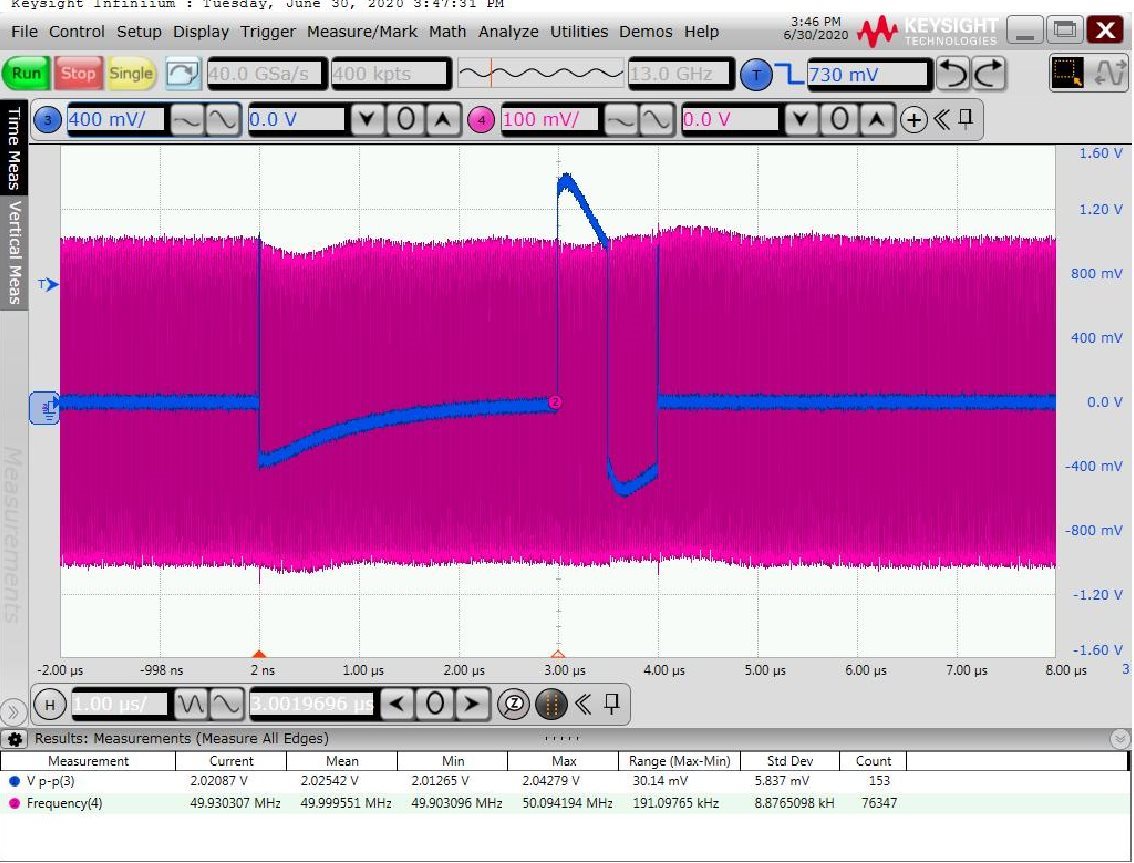Hi team,
My customer has the following questions about lmx8410, and I am not familiar with RF. Please help me. Thank you in advance.
Use two lmx8410 evaluation boards.
OSCin 50MHz
LO 4860MHz
RFin 4800MHz
IFout 60MHz
SYNC is 10MHz discontinuous pulse signal(what is the format of sync signal?)
The OSCin, RFin ,and SYNC are synchronous, and the SYNC pulse signal is triggered manually outside, and the phase synchronization cannot be carried out. What are the specific software and hardware implementation steps to achieve the phase synchronization?
Note: both OSCin and SYNC are synchronization signals provided by external HMC7044.
Best Regards,
Amy Luo



